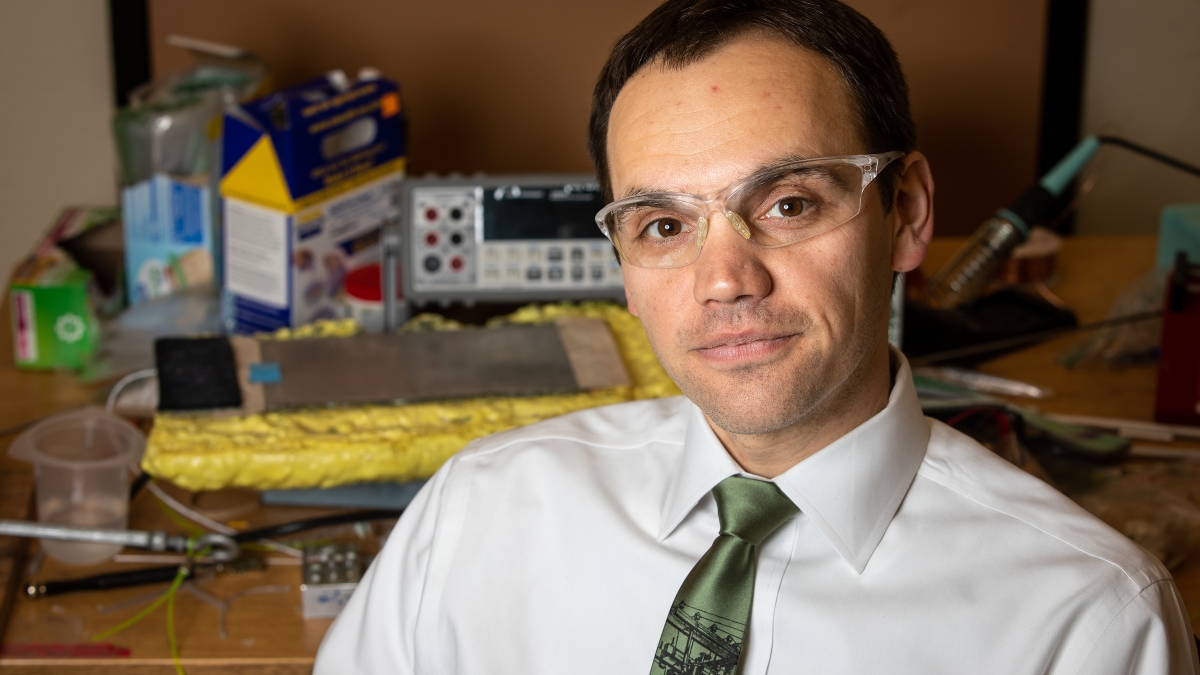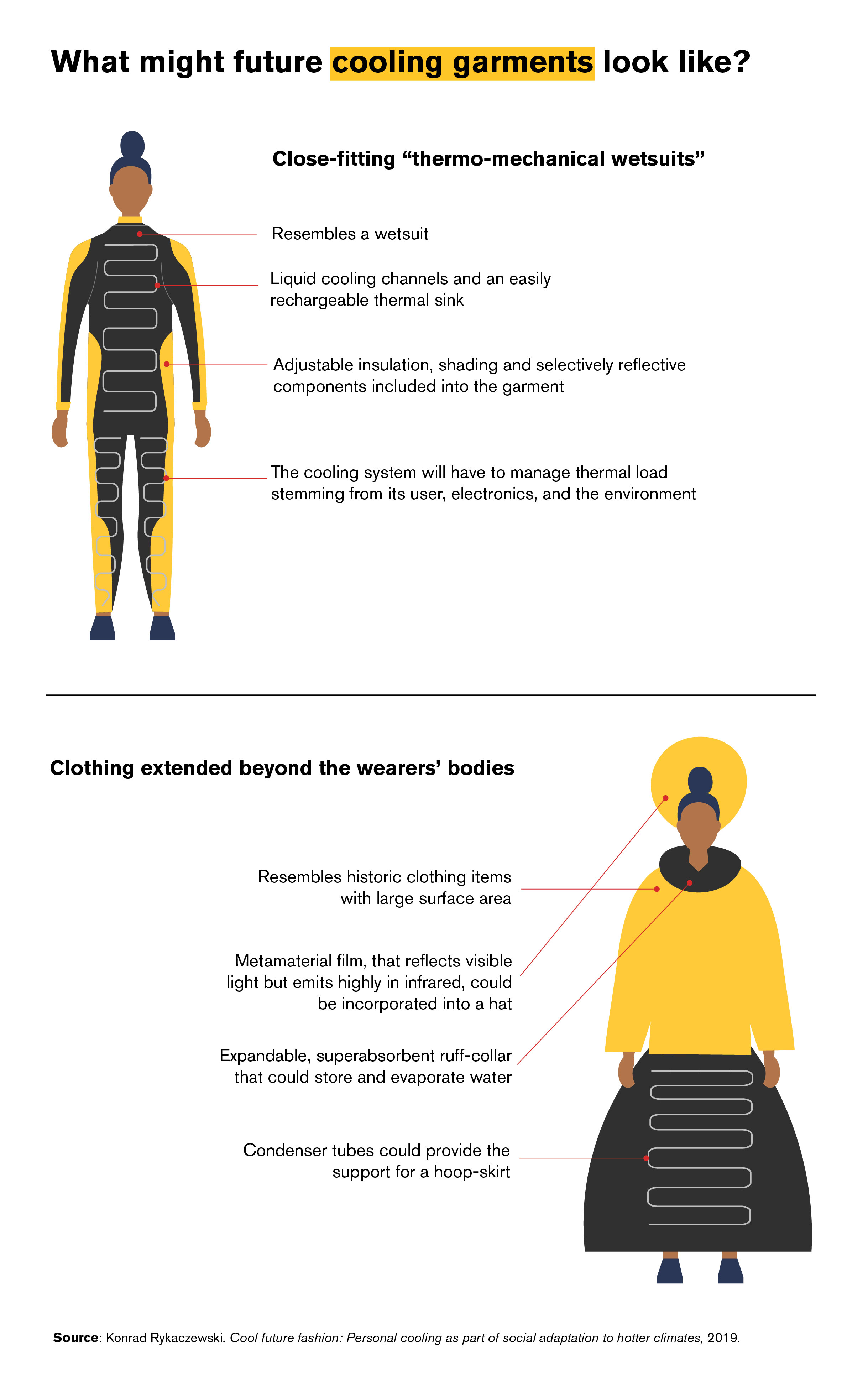In the classic science fiction novel "Dune," much of the story takes place on a harsh desert planet named Arrakis. The planet has no natural precipitation. Native inhabitants wear suits which capture all the moisture from their bodies and recycle it into drinking water.
Here on Earth, the last four years have been the hottest on record. By the year 2100, about half of the world's population is predicted to be exposed to climatic conditions exceeding deadly thresholds for at least three weeks per year. Deadly heat will become normal. In a foreshadowing of what may come, the city of Quriyat in Oman experienced a record-high 24-hour low temperature of 108.7°F last June.
When scorching Sonoran summers become not just inconvenient, but a matter of life and death, what will we wear to not only survive, but to have a good quality of life?
An Arizona State University engineering professor has been working on the fashions, and fabrics, for a hot planet.
“Cooling will become one of the key functions of clothing,” said Konrad Rykaczewski, an assistant professor at the School for the Engineering of Matter, Transport and Energy. “Right now we make clothes to look pretty.”
Rykaczewski draws from nature and history as well as materials science and thermal engineering in his work.
Cooling garments exist now, for firefighters and the military, and also multiple sclerosis patients, who are heat sensitive, but they tend to be heavy, or clunky or inefficient over long periods of time.
Initially Rykaczewski imagines cooling components will be concealed under clothes that look like what we wear now.
“If the global temperatures continue to soar, fashion might incorporate the cooling as a part of the new aesthetic,” he wrote in one of two papers he has published on his ideas and research. “From a thermal management point of view, such garments should not only remove more heat, but also help to maintain our core temperature by reducing the internal and external heat loads.”
Infographic by Safwat Saleem/Presidential Communications
Clothing like that will collect heat from the body, and then reject it. Larger areas cool down faster. That’s what large vascular elephant ears do.
“Exterior clothing components with a large area could, for example, create effective heat shields as well as heat sinks,” Rykaczewski wrote. “Such components could also create micro-climates and provide more space for a robust cooling system as well as a mechanical exoskeleton.”
In imagining clothes of the future, Rykaczewski didn’t go forward 10,000 years to the world of "Dune." He went back in time to Renaissance England and the court of the Sun KingKing Louis XIV of France.. Clothing from those periods extended far beyond the wearer’s body, like massive ruff collars, padded shoulders and sleeves, hoopskirts, bustles, crinolines, hats and wigs.
Reimagine the design and use modern materials, and some historic styles could cool much more than the tight clothes people wear now.
“Could the humble evaporative cooling bandana or towel be outperformed and replaced by an expandable, superabsorbent ruff collar which could store and evaporate considerably more water?” Rykaczewski wrote.
Metamaterial film that reflects visible light but emits highly in infrared could be incorporated into designs. Condenser tubes could provide the support for a future hoopskirt, bustle or crinoline that would provide large heat rejection area.
Examples of historic clothing items with large exterior surface area whose format could be reimagined and reengineered to develop novel cooling garments. Highlighted in blue are (a) a ruff collar, (b) a calash bonnet, and a (c) cutaway sketch of a cage-crinoline underskirt.
“Our social adaptation will have to involve the broad use of personal cooling garments and contemplate on what the ‘cool future fashion’ might look like,” Rykaczewski said.
Since moving to Arizona six years ago, he has been intrigued with the desert, having only lived in temperate climates. “I’ve lived all over the East Coast and in Europe, but this is very different,” he said. “I like Arizona. I like the desert.”
The father of two small children, he started wondering about their future in the Southwest. “Can my children stay here? Is that possible over the next several generations? What will it look like?”
Rykaczewski is not only thinking about fashion for a hot world. He has also been designing materials for them. A thermal engineer, for the last few years he has worked on thermal management of electronics, putting partially liquid, partially solid particles of gallium-based liquid metal into silicone.
“When you put the liquid metal in, when you have the right size of droplet … the droplets will stretch,” he said. When the liquid metal is in the silicone and you stretch it out, the liquid metal droplets change shape from a sphere to a cylinder.
“And there is no impact on the mechanical properties of the material,” he said. “All of a sudden we have materials that can conduct (heat) almost like steel, but they can feel as soft as your skin.”
His temperature-regulating fabric is made from the material, but embedded with tubes that can be filled with circulating liquid. A roughly 4x10 inch sample contains about 15 feet of tubing.
A roughly 4x10 inch sample contains about 15 feet of tubing. Photo by Charlie Leight/ASU Now
Rykaczewski has a “small army” of PhD candidates working to enhance the material even further: Praveen Kotagama, Akshay Phadnis and Chad Manning.
“My group is developing these materials,” Rykaczewski said. “How can we use them for augmenting performance of thermal systems with the aspect that they can deform, that they can change shape as they operate? It turns out no one even knows how to design it. … There’s a lot of potential.”
Top photo: Assistant Professor Konrad Rykaczewski is leading the development of a temperature-regulating fabric created from flexible silicon and aluminum particles. Photo by Charlie Leight/ASU Now
More Science and technology

Applying AI to microelectronics manufacturing
Rivers flow across the planet’s surface, carving deep valleys and intricate canyons. Likewise, makers of microelectronics direct plasma, an ionized gas, to travel over silicon wafers, etching…

Applied Materials invests in ASU to advance technology for a brighter future
For nearly 60 years, global giant Applied Materials has been hard at work engineering technology that continues to change how microchips are made.Their products power everything from flat-panel…

Meet ASU engineering students who are improving health care, computing and more
Furthering knowledge of water resource management, increasing the efficiency of manufacturing point-of-care health diagnostic tools and exploring new uses for emerging computer memory are just some…





